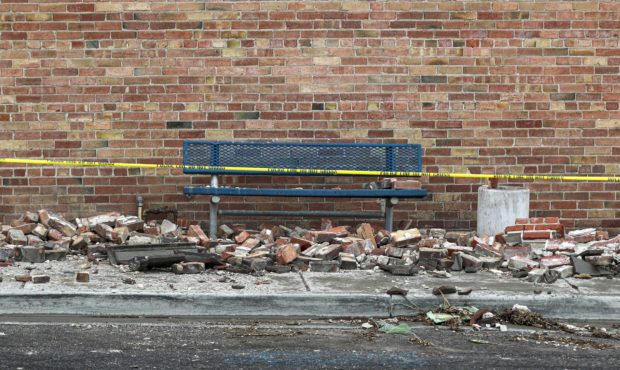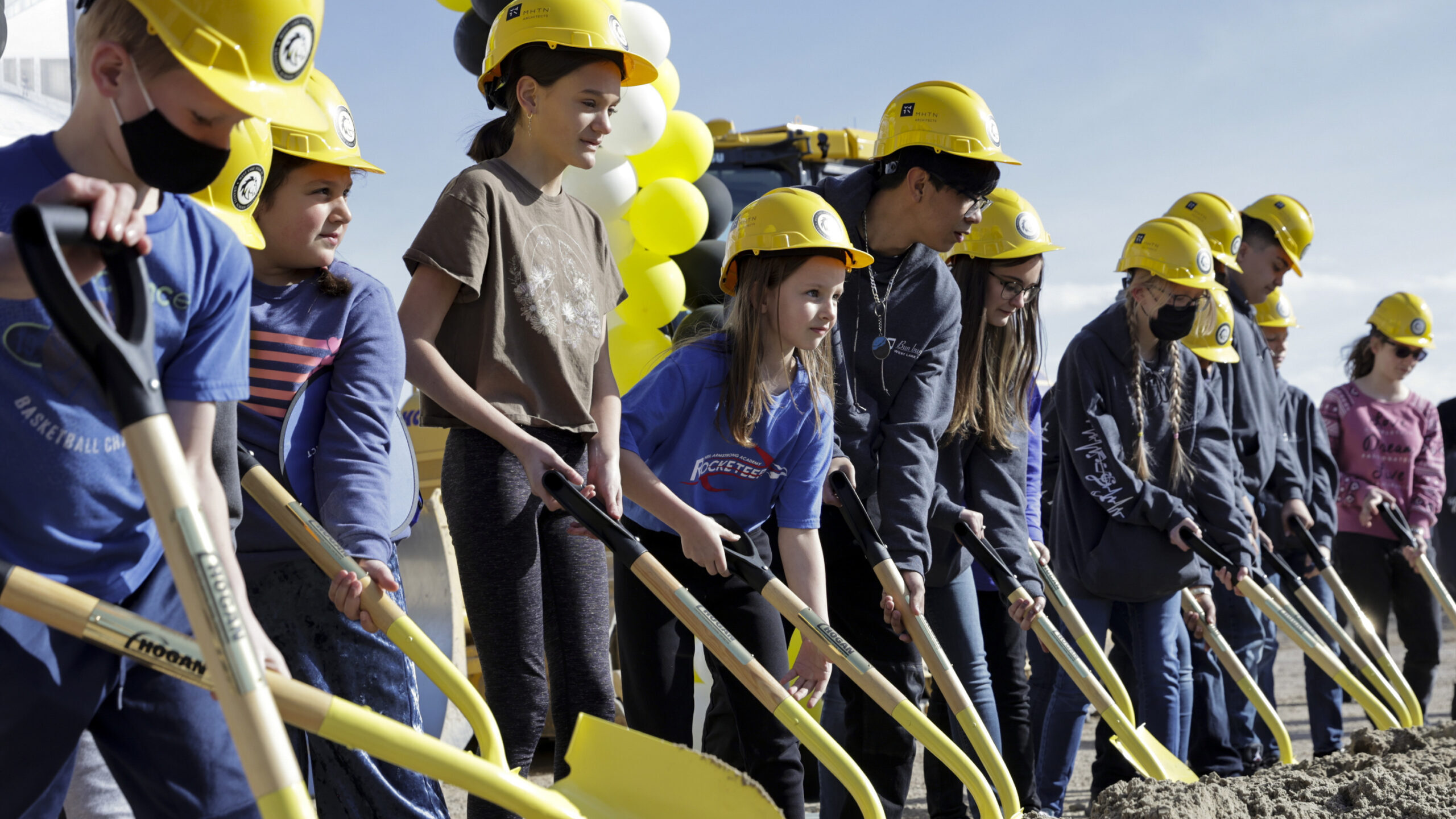Water, schools, among major concerns for Utah earthquake commission
Jan 27, 2022, 6:50 PM | Updated: Jul 29, 2022, 9:47 am

FILE: Caution tape surrounds the VFW building on Magna’s Main Street on Tuesday, March 24, 2020, following a 5.7 magnitude earthquake that was centered near the city on March 18. (Steve Griffin, Deseret News)
(Steve Griffin, Deseret News)
SALT LAKE CITY — The Utah Seismic Safety Commission (USSC) would like Utah lawmakers to consider five suggestions that it says would put the state of Utah in a much better position to overcome a major earthquake.
There is a 43% chance that the Wasatch Front region will experience a magnitude 6.75 or greater earthquake in the next 50 years, seismic experts estimate.
“Addressing potential outcomes in a large earthquake can be overwhelming. These five recommendations are actions the State of Utah can take right now to become more resilient in the event of a major earthquake,” Jessica Chappell, engineer and vice-chair of the USSC, said.
The USSC will include these recommendations in a report for Utah lawmakers.
Keep the water flowing
Aqueducts in Utah are aging, the USSC reports. And they need to be strengthened with seismic improvements.
“Over two million Wasatch Front residents rely on aging aqueducts that need seismic improvements,” the USSC said in a statement. “If any one of these pipelines broke during an earthquake, hundreds of thousands of Utahns would be without water for six months or even longer.”
Improving Utah schools
The safety of Utah schools is another major concern. The Commission says it recommends feasibility studies to identify which school buildings are able to be strengthened.
If the building is such that it cannot be strengthened, the USSC recommends replacing it.
Code enforcement, and informing Utah communities about URMs
“Many of the deaths or injuries that could happen in “the big one” will come from the large number of unreinforced masonry buildings (URMs) scattered across the Wasatch Front,” the USSC said.
Of particular concern are brick homes, schools, and offices built before 1976. According to the USSC, these “often collapse during large earthquakes.
Larger and more complex buildings across the state must have “rigorous structural plan reviews.” And, those reviews should be done by licensed structural engineers, the commission said. These measures will help ensure that buildings in Utah meet code requirements for seismic safety.
Earthquake Early Warning System
According to the United States Geological Survey, an earthquake early warning system (EEW) uses “earthquake science and technology of monitoring systems to alert devices and people when shaking waves generated by an earthquake are expected to arrive at their location.”
And the USSC says Utah should conduct a feasibility study for Utah to have its own warning system.
“An EEW system can save lives and the economy by providing warning time to shut off various industrial, utility, and transportation systems before ground shaking begins,” the USSC said.
The agencies behind the report
The ideas presented by the Utah Seismic Safety Commission come from a partnership between the USSC, Envision Utah, the Earthquake Engineering Research Institute, the Structural Engineers Association of Utah, as well as the Division of Emergency Management.
“Utahns have a long heritage of preparing for the future,” said Ari Bruening, CEO of Envision Utah. “… if we start working together to put these strategies in place, we will all be better prepared to recover quickly and ensure Utah remains a great place to live.”
Other reading:
- Magnitude 3.6 earthquake felt at Zion National Park and surrounding areas
- Earthquake recorded near Springville, Utah
- Study looks at how ground could move under Salt Lake City
- 5.7 magnitude earthquake reported near Magna, shaking felt all over northern Utah












